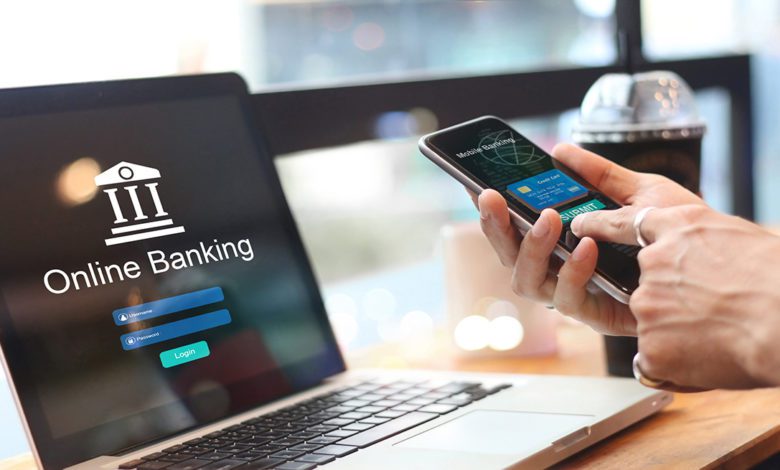
12 Cybersecurity Tips to Avoid Online Banking Fraudsters
Online banking has undoubtedly made transferring, receiving, and managing your money effortless. The convenience of paying for items using only your phone and the ease of managing debit and savings accounts online have made this form of banking a staple for many of us.
However, some people hesitate to embrace these technological advancements in online banking. With this in mind, cybersecurity experts at VPNOverview have compiled a list of 12 safety tips to ease the wary online banker’s mind. They have also highlighted the possible risks of online banking to keep you vigilant of any dangers.
What are the possible dangers of online banking?
Financially motivated cybercrime, using malware and phishing, is growing rapidly. In fact, by 2023, the number of internet users is set to increase by 275%, creating more targets for online banking fraudsters. Banks worldwide are doing all they can to protect their customers from banking fraud by raising awareness and utilizing new technology to make online banking safer.
Malware
Cybercriminals can use malware like spyware to break your phone or computer and potentially steal your banking details. Cybercriminals can use a keylogger to track your keystrokes and steal your banking login details as you type them. In the worst-case scenario, a hacker can infect your computer with a virus, allowing them to control your computer and transfer your money straight into your account.
Phishing
Phishing is where a cybercriminal attempts to obtain someone’s sensitive information by pretending to be a party this person trusts, such as a bank. This impostor would contact the victim via email or phone to trick them into surrendering login information. The scammer will often produce a plausible reason why they are asking for this sensitive information. It is essential to stay vigilant and remember: it is highly unlikely that your bank will ask you for login details, PIN codes, or confidential information.
12 online banking safety tips
1. Be wary of transfers: Only transfer money to parties you trust. Money transfers cannot usually be reversed without the explicit permission of the receiving party.
2. Use a unique password and login details: Make sure your banking login details are different from your other online portals or services; it is much safer to have a different password for your bank if a hacker gains access to your device. The most secure password you can create will be at least ten characters long, containing at least one uppercase letter, one lowercase letter, one number, and one symbol. It would be best to consider changing your password to a new unique one every six months.
3. Keep login details safe: Do not give your online banking login details to anyone. This could be a phishing scam if you receive a phone call or email asking you to enter your banking login details, sensitive information, or PIN codes.
4. Use fingerprint and face ID: Use the newest technology when signing into your online banking apps. Using a fingerprint or Face ID login is much safer than a username and password. Another security measure to consider is using two-factor authentication, essentially providing two methods of logging in to ensure that the right person is logging in.
5. Update apps: Ensure your device’s operating system is up-to-date. The same goes for your online banking app if you use one. The best practice is to configure your settings to update all updates automatically.
6. Never click on suspicious hyperlinks: If you receive an email or a text from a number or address you don’t recognize that contains a hyperlink, don’t click on it. Do not download any files they may contain.
7. Be wary of suspicious emails: Cybercriminals may send you a convincing-looking email with your bank’s logo and a professional-looking layout. If this email asks for sensitive information, including your password, login details, or PIN code, delete this email.
8. Check HTTPS connection: Always ensure the website you visit has a secure connection before logging in to your online banking account. Many browsers, such as Google Chrome, Mozilla Firefox, and Internet Explorer, show whether your connection to a specific website is secure. Some of these browsers may display a padlock symbol inside the address bar indicating the safety of a website’s connection. If not, you can check the URL:
If the URL you visit contains “https://,” this is secure as the ‘s’ stands for secure. The connection isn’t secure if you see “http://,” the connection isn’t secure. You may have to click on the URL in the search bar to see the “https://” appear. Do not share personal details with that page if the connection isn’t secure.
9. Install antivirus software to protect yourself from malware and viruses. The best antivirus programs offer a built-in firewall, a network security device that provides a barrier between a trusted and untrusted network.
10. Be wary of phishing: If you suspect you have encountered a potential phishing email or call that claims to have been sent by your bank, contact your bank immediately to notify them. If they do not know about this request, you were likely almost a victim of a phishing scam.
11. Check your banking app frequently: Check your online bank for peculiar activities and alert your bank of any transactions you don’t recognize.
12. Trust your gut: If something doesn’t feel quite right as you transfer payment or enter sensitive details, trust your gut and don’t continue.
A spokesperson from VPNOverview commented:
Although banks around the world are working hard to make online banking as safe as possible, it is still a good idea to take some safety measures yourself when managing your finances. By taking charge of your own online safety, you can prove to your bank that you are not negligent and are more likely to be reimbursed by your bank if something bad happens. By following these tips to protect yourself while online banking, managing, paying and receiving money will become a lot safer.



